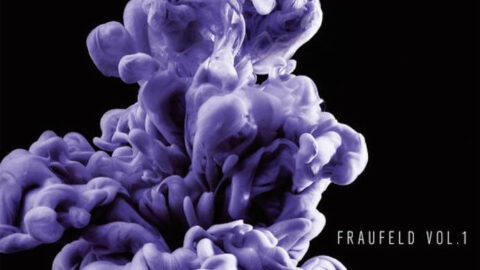Fraufeld–a long-term initiative to promote female composers created by pianist Verena Zeiner and flutist Sara Zlanabitnig–released its first album Fraufeld Vol. 1 in an ongoing series on the Freifeld Tontraeger label in June 2017. This diverse collection of female composer-performers showcases women working in contemporary and improvisational mediums, often performing their own works along with their female collaborators.
The opening of the album is one of Zeiner’s own works, What We Don’t Say, featuring herself on piano and Maria Frodl on cello. The undulating waves of piano accompaniment provide a velvety padding for Frodl’s romantic swells, creating a contemplative, though conservative, opening to the album. Later on in the album, Zlanabitnig also curates one of her own works for flute, cello, and piano entitled klirrekalt, a placid, delicate piece built on overlapping long tones and icy harmonies. While the composition itself could have used an even greater degree of fragility, the members of Sirius (Zlanabitnig herself on flute; Margarete Deppe, cello; and Milly Groz, piano) bring a subtly bittersweet melancholy to their performance.

The most daring, standout voices of the album are bass clarinetist Susanna Gartmayer and vocal innovator Agnes Hvizdalek, who work together and as soloists on a few tracks. Gartmayer’s microb study 1, the first of a two-movement set for solo bass clarinet, is a playful take on semi-pitched, percussive minimalism. On a first listen, one might mistake the bass clarinet for an elaborate array of PVC pipe mixed with various mallets and found percussion objects. Gartmayer instead uses her playful yet audacious compositional voice to essentially compose a percussion piece for her own instrument, artfully weaving together key clicks and explosive articulations to create shifting rhythmic and pitch patterns with carefully chosen phasing mixed with whimsy.
Gartmayer and Hvizdalek collaborate on helium-muehle, an acoustic improvisation that showcases the women’s unique skillsets through intense timbral imitation and careful dissections of syllables, which one might easily mistake as electronic manipulations. Hvizdalek’s astounding control over her voice punctuates phrases with otherworldly glottal stutters and dramatic throat growls, mimicking the multiphonics of the clarinet. Gartmayer’s command of her instrument blends slap tongue attacks and screaming multiphonics, which punctuate the atmosphere along with Hvizdalek’s glottal stops and ethereal sustains.
Another star of the album is Christine Gnigler, whose Close enough to exist apart for recorders dons a magnificent use of resonance, in which low microtones beat and pulsate against one another. The pure tones of the recorder overload the ears in the best way possible, vibrating in one’s inner to the point of complete sonic super-saturation.
Caitlin Smith’s string quartet JOAN JETT KICKS OFF HER BOOTS, FINISHES HER BEER AND TAKES A DEEP BREATH: “ is a vivid cacophony of voices in the electronics, attractively overwhelming and unintelligible. While the acoustic instruments are seemingly unrelated to material in the electronics, the intrigue lies in its progression from bedlam to relative clarity, as phrases eventually start to emerge from the din of voices in the electronics. The string writing, while well-crafted and clear, seemed lacking in the same adventuresome spirit of the electronics, though the quartet strings&noise attack each gesture with biting ferocity.
A couple solo moments on the album of note are composer-performer Ingrid Schmoliner’s ZURAS for solo prepared piano and Judith Ferstl’s Tillsammalero for solo upright bass. Schmoliner creates a moto perpetuo whirlwind of chromaticism–as if Ligeti himself wrote another etude specifically for the prepared piano–that shimmers and swirls in cyclic turmoil. Schmoliner’s compositional and performative skills shine in her rhythmic finesse and deftly planned preparations, which add a percussive pop to the melodic lines that emerge from the vast sea of notes. Ferstl’s showcases her stellar control of counterpoint in her bass solo, voicing opposing lines with impeccable clarity and buoyancy.

Rue De Rosiers by Lisa Hofmaniger creates an ethereal world of whispery, bending tones reminiscent of the hichiriki or duduk. Hofmaniger, featuring herself on soprano saxophone and Judith Schwarz on percussion, blends evocative melodic lines with the metallic qualities of the percussion in a way that augments the capabilities of either instrument. She artfully marries the two parts together through carefully crafted orchestration and beautiful playing.
Conversation with Myself, written by Julia Schreitl and performed by JuJu (Schreitl, saxophone and Judith Reiter, viola & voice), packs flurries of arpeggios and lyrical lines into compact spaces. JuJu impeccably executes the technical passages with notable musicality, though the quickly changing and cliché sections of material weaken the piece’s formal development, cramming too many ideas that only faintly resemble one another into one short piece. Similarly, Astrid and Beate Wiesinger’s Act of Going contains strong timbres, but falls short in its cohesiveness. While it is clear that the duo is highly adept at both free jazz and electronic music, the attempts to blend the genres manifests as a series of choppy sections that lack development.
Fraufeld Vol. 1 brings well-deserved recognition to a plethora of innovative composers, performers, and improvisers whose unique voices create a diverse collection of music. While quality of composition varies on this album, it is nevertheless a celebration of women in contemporary music forms, which hopefully will continue on as planned as a long-term curatorial project. Brava!
























